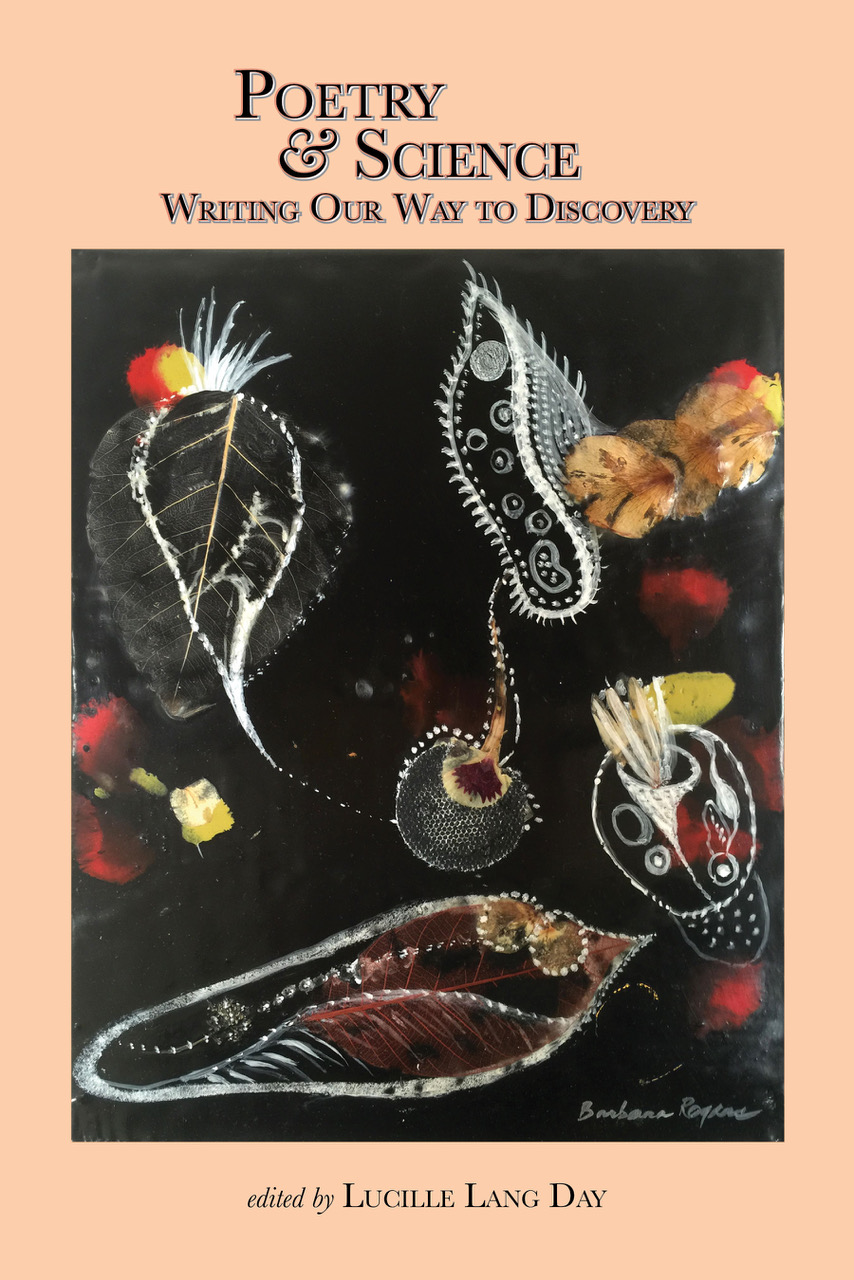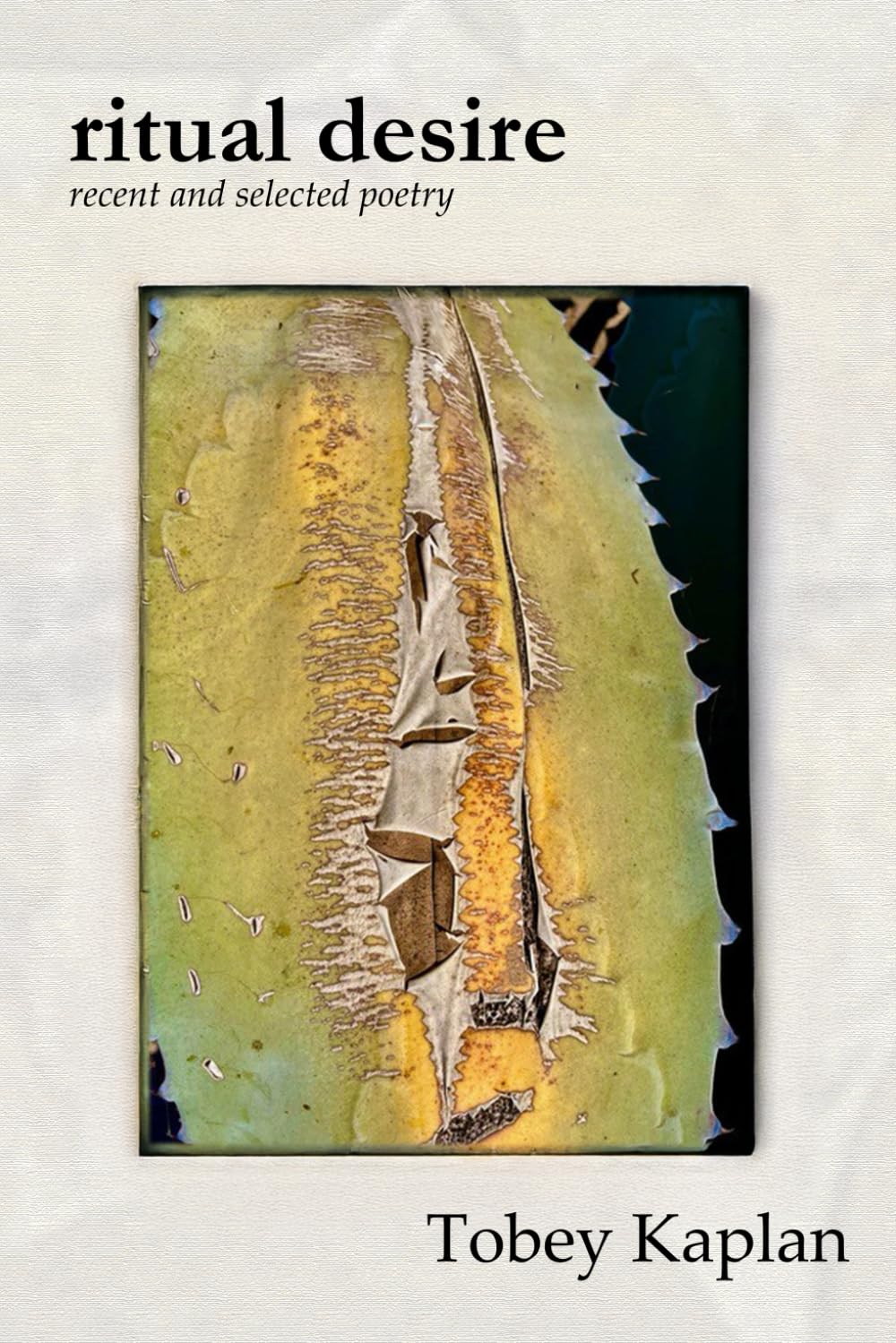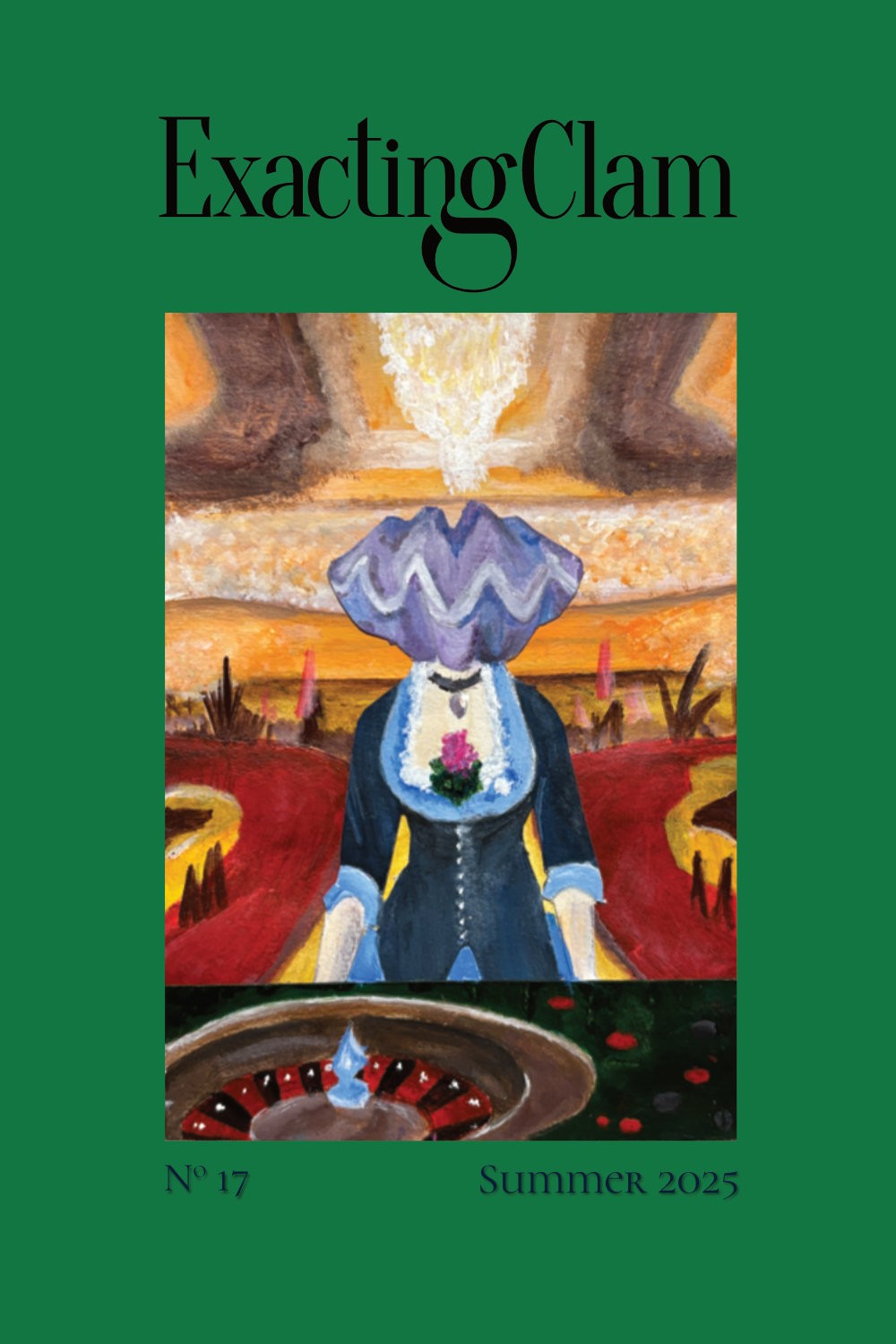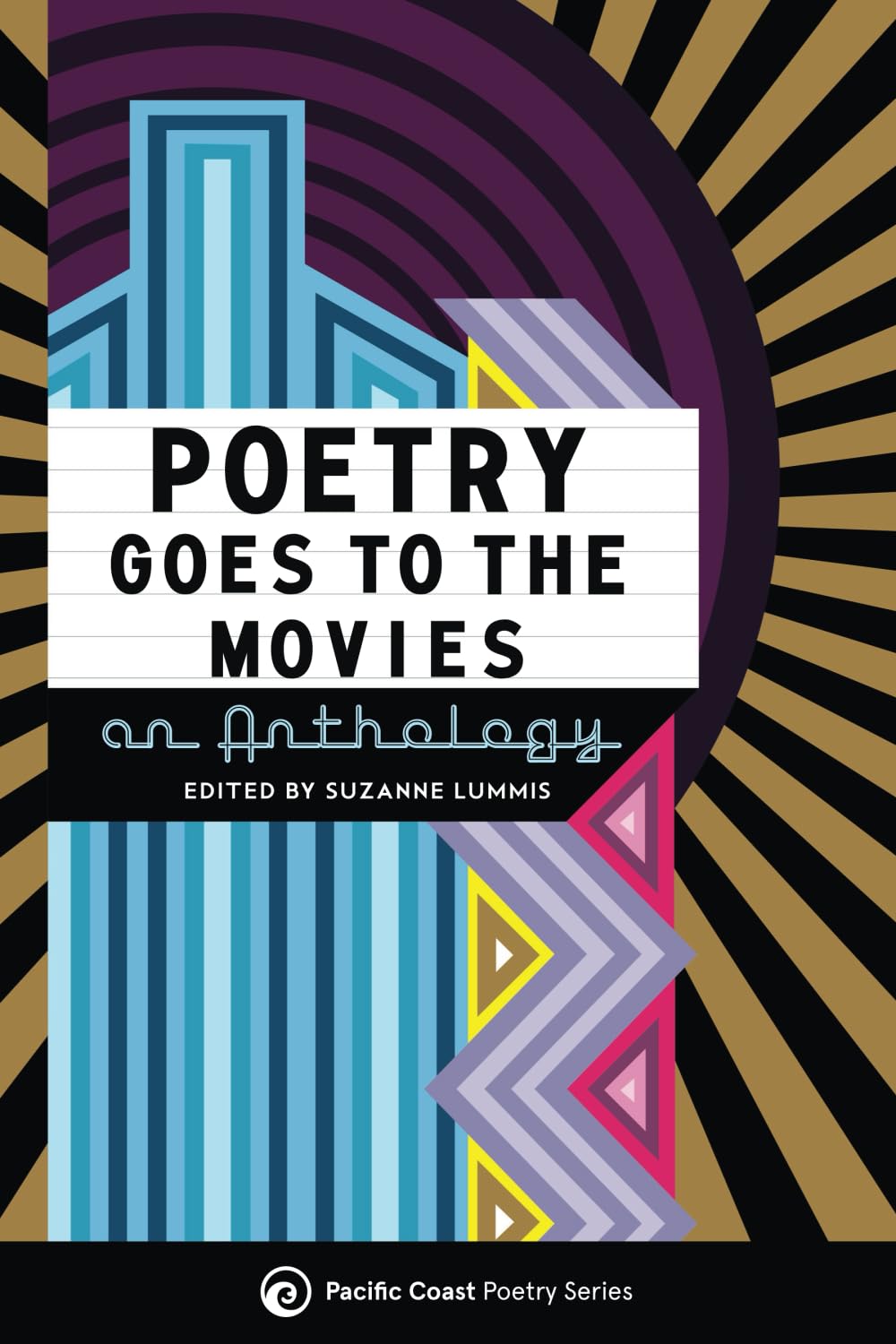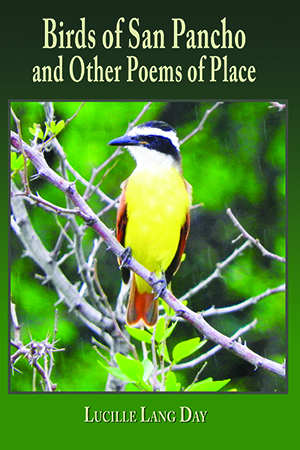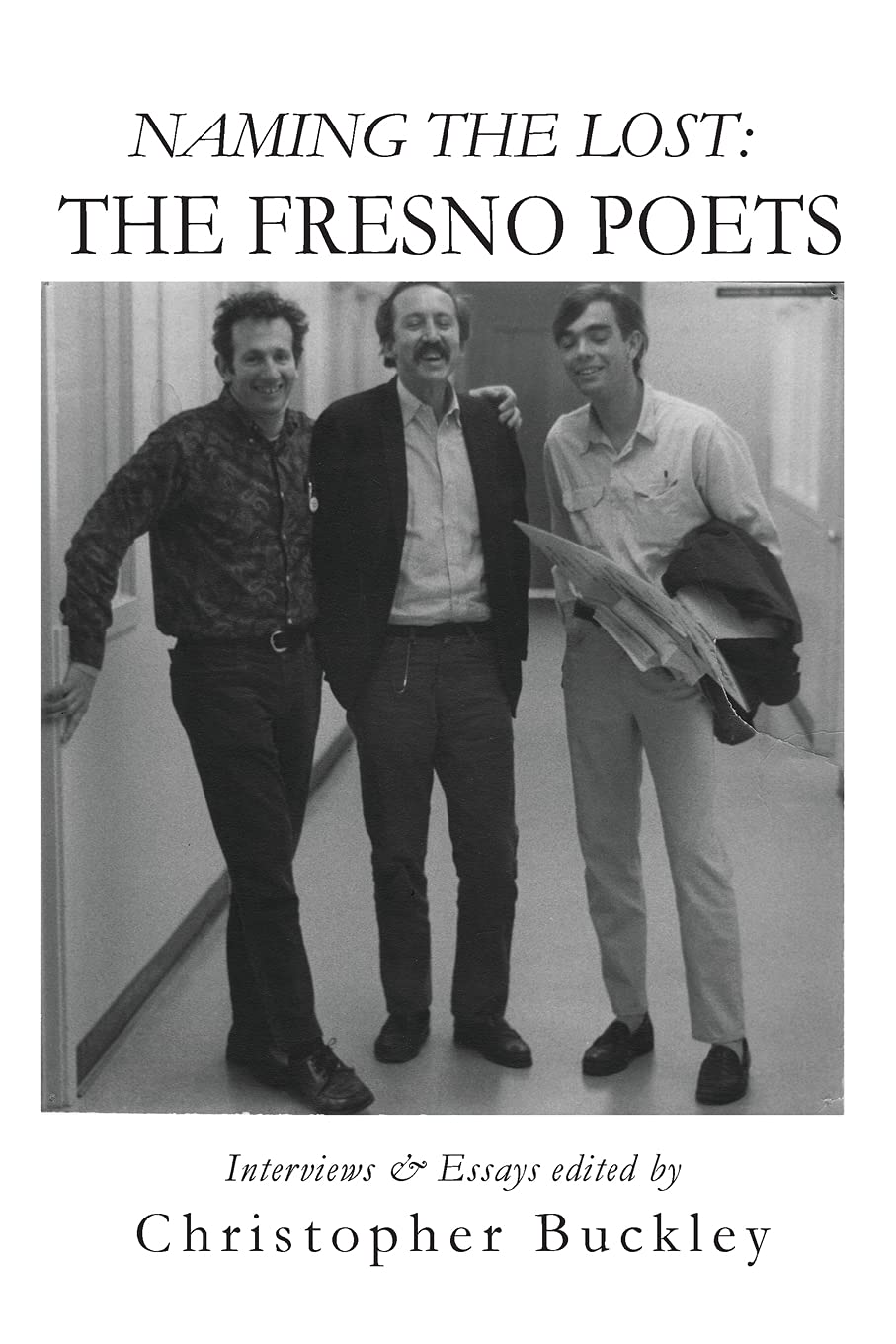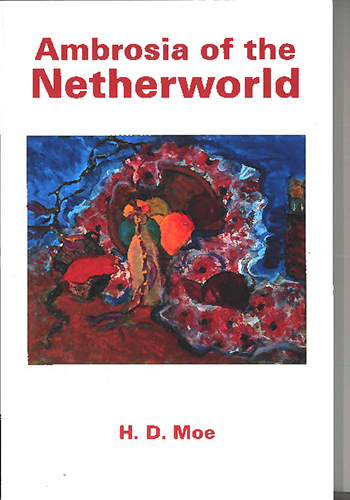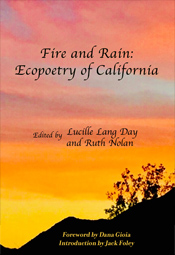
"No More Inhibitions"
Philip Lamantia (1927-2005)
an essay by Jack Foley
The Collected Poems of Philip Lamantia, edited by Garrett Caples, Andrew Joron, Nancy Joyce Peters, Foreword by Lawrence Ferlinghetti, University of California Press, 2013, 512 pages, eight black and white photographs, $49.95 hardcover.
Photo by Christopher Felver.
THE DEATH OF PHILIP LAMANTIA on March 7, 2005 marked the end of an extraordinary career—a career whose movement touched on issues of Surrealism, drugs, madness, ecology, bohemianism, religion, spirituality, nature, the occult, among other things. Lamantia was one of the readers at the legendary Six Gallery reading on October 7, 1955, the reading at which Allen Ginsberg first read "Howl" and which launched "The San Francisco Renaissance." Lamantia told me once that he was considering calling a new book High Poet—and he meant "high" in all its senses. (One of these of course was to suggest the phrase, "high priest": Catholicism remained a factor in Lamantia's consciousness.) This poet was also a consciously California poet, born in San Francisco and deliberately exploring aspects of his natal "place": mountains too are "high" places.
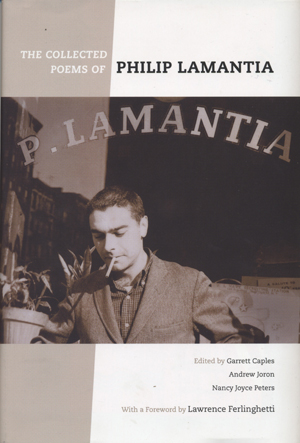
At a reading celebrating the publication of Lamantia's Collected Poems (edited by Garrett Caples, Andrew Joron, and Nancy Joyce Peters), Michael McClure remarked that he felt that Lamantia had created a new mode of Surrealism. McClure felt that Surrealism as he understood it was interesting but European—not something he felt especially close to. Lamantia, McClure insisted, "brought Surrealism home."
The Collected Poems of Philip Lamantia is a most welcome book. It is edited with considerable care and brings to light far more aspects of this remarkable poet than were previously on view. In his Foreword to the book, Lawrence Ferlinghetti writes, "Lamantia, both in his person and in his poetry, bridged the gap between European Surrealism and the radical American cultural revolution begun by the Beats." But there is more than merely Surrealism or Beat at stake here. Such labels fall away in the face of a brilliant, ecstatic, angry, religious/anti-religious, witty, drug-driven, jazz-inflected, bird-identified, crazy poetry that takes on nothing less than the universe itself, nothing less than Everything. For in some deep sense, Lamantia wants to put Everything into his poetry. Hubris (in the positive sense!) on steroids! But why not? If you fail, you at least fail at an extraordinary undertaking. Like Whitman, Lamantia "contains multitudes," and—though André Breton remained a respected mentor for Lamantia throughout his life—in many ways Lamantia resembles Whitman far more than he resembles Breton. It is "Unscrew the locks from the doors! / Unscrew the doors themselves from their jambs!…Through me many long dumb voices" more than it is "My wife with the hair of a wood fire / With the thoughts of heat lightning" ("L'Union Libre," 1923). Lamantia gave a wonderful reading of Meadowlark West at Larry Blake's on October 14, 1985—a birthday reading. Listening to it, Ivan Argüelles nudged me and said nothing about Surrealism or the Beats: he said, "No more inhibitions!"
•
From virtually all perspectives—early Greek philosopher to twentieth-century specialist—there is agreement that artistic creativity and inspiration involve, indeed require, a dipping into pre-rational or irrational sources while maintaining ongoing contact with reality and "life at the surface." The degree to which individuals can, or desire to, "summon up the depths" is among the more fascinating individual differences. Many highly creative and accomplished writers, composers, and artists function essentially within the rational world, without losing access to their psychic "underground." Others, the subject of this book, are likewise privy to their unconscious streams of thought, but they must contend with unusually tumultuous and unpredictable emotions as well. The integration of these deeper, truly irrational sources with more logical processes can be a tortuous task, but, if successful, the resulting work often bears a unique stamp, a "touch of fire," for what it has been through.
—Kay Redfield Jamison, Touched with Fire (1993), a favorite book of Lamantia's
"I can walk into a room full of people and within half an hour I can take on the personality of anyone there."
—Philip Lamantia, quoted in David Meltzer's San Francisco Beat (2001)
One of the reasons very little has been written about the poetry of Philip Lamantia is the fact that Lamantia's poetry is extremely difficult to write about. How does one "explicate" a passage like this, from "Hypodermic Light":
It's absurd I can't bring my soul to the eye of odoriferous fire
my soul whose teeth never leave their cadavers
my soul twisted on rocks of mental freeways
my soul that hates music
I would rather not see the Rose in my thoughts take on illusionary prerogatives
it is enough to have eaten bourgeois testicles
it is enough that the masses are all sodomites
Good Morning)
Or a line like this, from "From the Front," a poem which refers to "desperate surrealism":
Motorcycles of atonal venetian blind dust of wind rooftop!
Interestingly, and adding to the complexity: the violence of Lamantia's language is often at some distance from the images of the poet on the covers of his early books: handsome, but gentle. Not the "wild man" who sometimes manifests in the poetry.
Lamantia's biographical note in Donald M. Allen's New American Poetry (1960) is typically terse:
Born 1927 in San Francisco. Lived in New York City, Mexico, Europe and North Africa. Hailed by André Breton as an authentic surrealist poet; first appearances in View, 1943-45; broke with surrealism by 1946. Since then mostly underground, and traveling.)
Ann Charters gives us a little more in her introduction to the Lamantia selections in The Beat Reader (1992):
Philip Lamantia was born in San Francisco on October 23, 1927, the son of Sicilian immigrants. He began writing poetry in elementary school and was briefly expelled from junior high for "intellectual delinquency" when he immersed himself in the work of Edgar Allan Poe and H. P. Lovecraft. At age [fourteen], after being introduced to surrealism by the Miró and Dali retrospectives at the San Francisco Museum of Art, he began to write surrealist poetry, realizing that "the purely revolutionary nature" of surrealism, "even before my knowledge of Surrealist theory, was part of my own individual temperament." Shortly afterward Lamantia left home to join the Surrealists in New York City and was welcomed by André Breton as "a voice that rises once in a hundred years."
There is also a charming chapter on Lamantia in Neeli Cherkovski's Whitman's Wild Children (1988) and a complex article, "Destroyed Works: Philip Lamantia's Excessive Subjectivities," written by Jody Norton and published in Sulfur 29 (Fall, 1991).
Now, in "High Poet: The Life and Work of Philip Lamantia," Garrett Caples and Andrew Joron fill in a good deal of the poet's life and development. They write of his struggle with "a lifelong manic-depressive condition":
Bipolar episodes, which could take the form of spiritual crises, led him to withdraw from society for long periods, to suppress his own work from publication, and even, on occasion, to destroy it. As a result, Lamantia maintained a hermetic presence in American poetry, even as he played a seminal role in some of its most innovative developments…By the mid-'90s, Lamantia had largely fallen silent due to severe depression, though he would reemerge after the publication of Bed of Sphinxes: New and Selected Poems 1943-1993 in 1997 and a brief return to Catholicism following a 1998 vision in the National Shrine of Saint Francis of Assisi in San Francisco's North Beach. This final burst of poetic activity resulted in a handful of published poems before he fell silent once again, in late 2001. He spent the rest of his life withdrawn from the world.
The opening poem of The Collected, "The Touch of the Marvelous," evokes Lamantia's "surreal youth." The poem has a hidden reference to Lamantia's name: "Lamantines" are "a species of herbivorous mermaid-like mammals native to Africa and the Americas, inhabiting the mouths of larger rivers. They play, in West-African myth, a role similar to that of the Sirens in Europe" (Lilyan Kestleloot, Les Écrivains Noirs de Langue Français, quoted at the beginning of Philip Lamantia's book, The Blood of the Air). "Touch of the Marvelous" originally appeared in 1944 in the Surrealist publication, VVV:
The mermaids have come to the desert
they are setting up a boudoir next to the camel
who lies at their feet of roses
A wall of alabaster is drawn over our heads
by four rainbow men
whose naked figures give off a light
that slowly wriggles upon the sands
I am touched by the marvelous
The word "marvelous" alludes to a famous passage in André Breton's 1924 "Manifesto of Surrealism"—the "First Manifesto"
Let us not mince words: the marvelous is always beautiful, anything marvelous is beautiful, in fact only the marvelous is beautiful…only the marvelous is capable of fecundating works.…
How does the marvelous "fecundate" Lamantia's poem? Mermaids, themselves creatures of the marvelous, belong to the realm of the ocean. In Lamantia's poem they show up in the desert and are associated with camels—equally marvelous creatures, but, unlike the mermaids, real. Indeed, the desert is blossoming here, at least "at their feet of roses." In the next stanza, a wall "is drawn over our heads." Wouldn't that make it a ceiling, not a wall? And how can light be said to "wriggle"—an interesting word choice in a passage which begins by sounding almost Biblical: "A wall of alabaster is drawn.…" And what about "touched"? Does that mean that the marvelous affects the speaker, "touches" him? Probably. But there is at least a glance at the meaning of "touched" as insane: "I am touched." A moment later, a Muse figure appears. Her name is "BIANCA"—capitalized and meaning "white." She is also "the angelic doll turned black," however, as well as "the child of broken elevators" and "the curtain of holes / that you never want to throw away." The change in the meaning of "of" in those two lines is dizzying, but no matter: not only is BIANCA "the first woman," she is also "the first man." Indeed, the speaker says, "I am lost to have her." Shouldn't that be lost unless I have her? But perhaps "having her" is precisely what causes "loss."
In 1953, André Breton defined Surrealism as "a far-reaching operation having to do with language," "the rediscovery of the secret of…language," an attack on the "utilitarian usage" of words in an attempt "to emancipate them and restore all their power" ("On Surrealism in Its Living Works"). Surrealism, Breton goes on, took up arms "against the tyranny of a thoroughly debased language"; it was an "operation which tended to bring language back to true life":
The spirit that makes such an operation possible and even conceivable is none other than that which has always moved occult philosophy: according to this spirit, from the fact that expression is at the origin of everything, it follows that "the name must germinate, so to speak, or otherwise it is false." The principal contribution of Surrealism, in poetry as in the plastic arts, is to have so exalted this germination that everything other than it seems laughable.
Lamantia's poem germinates. The opening lines purport to describe something: they are a narrative to some degree. Yet "mermaids" (inhabitants of the ocean) and "camels" (inhabitants of the desert) operate in vastly different contexts: they don't go together any more than a word like "wriggles" goes with a word like "alabaster." But of course the incongruity is the point, as in Lautréamont's famous chance encounter of a sewing machine and an umbrella on a dissecting table. "Realistic" narrative is ego affirming; it situates us in relation to something we suppose actually exists: if there is a desert, we expect there to be camels. The opening line of "The Touch of the Marvelous" appears initially as a narrative—something is described as having occurred—but it is in fact a syntactical yoking together of two utterly separate concepts. The poem places us at precisely the point at which something utterly irrational and magical begins to happen to a world which is ordinarily under severe rational control:
I am touched by the marvelous
as the mermaids' nimble fingers
go through my hair
that has come down forever from my head
to cover my body
the savage fruit of lunacy
One mode of language—realistic description—is undercut by another: the freedom of the words to mean beyond the restrictions of description, beyond the necessity to "name" the world: their freedom to germinate. In the process, the ego shifts and transforms itself into something which is not singly but multiply assertive, though it never disappears entirely:
I am looking beyond the hour and the day
to find you BIANCA
"Touch of the Marvelous" is a masterful and extremely early poem, written perhaps when the author was fifteen, certainly before he turned twenty. One can easily see how exciting this work must have seemed to Breton and others. Caples and Joron point out that "Breton at that time was much concerned with the survival of the surrealist project, which was facing, in the midst of the wartime dispersal of its key practitioners, increasingly hostile criticism declaring the movement to be irrelevant and outmoded." Here is a Lamantia passage that resembles Breton's work:
In the rose creeping into the tower of exiles
when the buffet is laden with jewels
when the night is filled with hate
when the womb of Eros is deserted
when the sleeping men are awakened
when the old lovers are no longer frightened
—my heart
(from "A Winter Day")
The Six Gallery reading took place on October 7, 1955. In Dharma Bums, published in 1957, Jack Kerouac presents Lamantia as "delicate Francis DaPavia" who "read, from delicate onionskin yellow pages, or pink, which he kept flipping carefully with long white fingers, the poems of his dead chum Altman [actually John Hoffman]"; Lamantia also shows up as David D'Angeli in Desolation Angels (1965). Lamantia's first book, Erotic Poems, was published in 1946. (The title came from Kenneth Rexroth; in San Francisco Beat Lamantia remarks to David Meltzer that some of the work in it was "directly in opposition to Surrealism.") His second book, Ekstasis, was published by the Auerhahn Press in 1959. In that same year Auerhahn also published Lamantia's Narcotica. On the title page—long before Timothy Leary had said a word on the subject—was the sentence, "I DEMAND EXTINCTION OF LAWS PROHIBITING NARCOTIC DRUGS!" The opening piece begins,"
—against you, psychiatrists would be conscience of the people! No more! —against you, doctors, druggists, sociologists, idiots, asses, the whole fuckingload of shit perpetuated out of STUPIDITY to elevate that most detestable NADA, that void attempting the determination of states of being—of BEING!—and which goes under the name of safety, fuck yr safety, WHO NEEDS IT?
On the cover was a haunting set of photographs, taken by Wallace Berman, of Lamantia shooting up. At the center of the photographs is a cross.
Ekstasis was followed in 1962 by the amazing book, Destroyed Works, also published by Auerhahn. In his author's note to Ekstasis Lamantia wrote of the "erotic, mythic, magical and devotional" nature of his poetry: "My object is a revelation, in manifestation, of beauty—its world, natural or supernatural.…" Here, in a note dated October 20, 1960—three days before his thirty-third birthday—he writes:
For me it is the Vision in its density and the truth of what I see the breath is in the Vision and I come to the rhythms it is above all a question of MY VISION thru which the images are focused, the beat in the activation of this energy field, hence the density, that the Being of poetry erupts out of nerves emotions skeleton muscles eyes spirits beasts birds rockets typewriters into my head and I see, the weir pivot, at that point all is Evidence Clarity Incomprehension Flame of Perfect Form and Chaos.
Suddenly the poet is, like Rimbaud, le voyant, "the seer" ("the poet makes himself a seer by a long, prodigious and rational disordering of the senses"). I have already quoted lines from the opening poem of the book, "Hypodermic Light." Here are the first two sections of that poem complete:
It's absurd I can't bring my soul to the eye of odoriferous fire
my soul whose teeth never leave their cadavers
my soul twisted on rocks of mental freeways
my soul that hates music
I would rather not see the Rose in my thoughts take on illusionary prerogatives
it is enough to have eaten bourgeois testicles
it is enough that the masses are all sodomites
Good Morning
the ships are in I've brought the gold to burn Moctezuma
I'm in a tipi joking with seers I'm smoking yahnah
I'm in a joint smoking marijuana with a cat who looks like Jesus Christ
heroin is a door always opened by white women
my first act of treason was to be born!
I'm at war with the Zodiac
my suffering comes on as a fire going out O beautiful world contemplation!
It's a fact my soul is smoking!
. . .
That the total hatred wants to annihilate me!
it's the sickness of american pus against which I'm hallucinated
I'm sick of language
I want this wall I see under my eyes break up and shatter you
I'm talking all the poems after God
I want the table of visions to send me oriole opium
A state of siege
It's possible to live directly from elementals! hell stamps out vegetable
spirits, zombies attack heaven! the marvelous put down by
martial law, America fucked by a stick of marijuana
paper money larded for frying corpses!
HERE comes the Gorgon! THERE'S the outhouse!
Come up from dead things, anus of the sun!
Compared to that, even "Howl" sounds a little like a Sunday School picnic. One is not surprised to discover that Allen Ginsberg at times referred to Lamantia as his "teacher." The religious impulse behind these poems—their thrust towards direct experience of deity—is as clear as day, though they are a deliberately profane thrust towards the divine. Reading them, one remembers writers like the fourteenth-century mystic Meister Eckhart, who used the term, "breakthrough." These passages from Eckhart's Selected Writings suggest the central focus of Destroyed Works, which also attempts to arrive at "breakthrough," at "that most inward place, where everyone is a stranger":
I have occasionally spoken of a light in the soul which is uncreated and uncreatable. I constantly return in my sermons to this light, which apprehends God without medium, without concealment and nakedly, just as he is in himself…this light is not satisfied with the simple, still and divine being which neither gives nor takes, but rather it desires to know from where this being comes. It wants to penetrate to the simple ground, to the still desert, into which distinction never peeped, neither Father, Son nor Holy Spirit. There, in that most inward place, where everyone is a stranger, the light is satisfied and there it is more inward than it is in itself.…Turn away from everything therefore and exist in your naked being, for whatever is outside being is ‘accidence' and all forms of ‘accidence' create a Why.
That we may ‘live in eternity,' so help us God. Amen.
"There is some way out of Guerrero Street! there must be!," writes Lamantia in "Deamin," "when will he come with the big hypo?" And in "Still Poems": "everywhere immanence of the presence of God…Constant flight in air of the Holy Ghost."
In a short paper it is barely possible to deal with as complex a figure as Philip Lamantia. What I've tried to do here is to suggest something of the early development of this amazing American poet. Other books followed Destroyed Works: they are Selected Poems (1967), The Blood of the Air (1970), Becoming Visible (1981) and, perhaps the most significant in developmental terms, Meadowlark West (1986). Of the new work published in Selected Poems (1967) Lamantia remarked that "I'm returning to my initial sources—like an act of nature." "Astro-Mancy," one of the most important of the new poems, announces that
…I'm recovering
from a decade of poisons
I renounce all narcotic
& pharmacopoeic disciplines
as too heavy 9-to-5-type sorrows
Instead I see Americav
as one vast palinode
that reverses itself completely until
Gitchi Manito actually returns.…
The poem offers a vision of "matter lovingly heightened / by meditation, and spirit / transmuted into matter":
the whole commune conducted by
direct rapid transcription
from a no-past reference
anti-rational, fantastically poetic
…
Each one his own poet
and poetry the central fact
The Blood of the Air has some fine love poems ("Only for those who love is dawn visible throughout the day"—"visibility" is a theme here and elsewhere) and the extraordinary "Flaming Teeth":
I'm obsessed by death fantasies
Husks
And the Night Thoughts of Edward Young
Death is a pineapple in the cake of death
Which wing?
I deny death I don't know why
Ask the swans who are rocking me under the chair forest
"Horse Angel" ("All horse cultures / And the horse in dreams!") is to some degree explicated by a note in Becoming Visible:
Cabala—the term cabala has been elucidated by the twentieth century alchemist Fulcanelli in Les Demeures Philosophales where he explains its derivation from the Latin, caballus, for horse, but signifying the transmission of knowledge and "revealing the source of all sciences"…The figurative image of the cabala as spiritual vehicle is the Pegasus of the Hellenic poets which derives from the Greek word for source: "to know the cabala is to speak the language of the horse."
The esoteric and the oneiric—even the obsessional—are constantly meeting in Lamantia's work. (It is also relevant to note in connection with "the Latin, caballus" that, just as "lamantine" has a connection to the poem's mermaids, the name "Philip" means "lover of horses.")
Becoming Visible contains "Bed of Sphinxes," which will be the title poem of the later collection, Bed of Sphinxes: New & Selected Poems 1943-1993 (1997). As the phrase "becoming visible" might indicate, the work in this book plays on modes of visibility and invisibility. (An elaboration of an earlier theme: I cited the love poem in The Blood of the Air; "Invisible" is also the title of the penultimate poem in Touch of the Marvelous. "Poetry," Lamantia told David Meltzer, "is the mean term between the physical basis for imagery and the metaphysical realm of being. This is what connects the affective to the cerebral, the heart to the sensual, and the mental vehicles of reception to the visible and invisible realms of being.") This is from "In Yerba Buena":
Beauty a great invisible
walks between luminous slabs
...
Those natives called Ohlone
in the peculiar humors of the weather
and those who danced
to placate "The Great Invisible"
in the bay of Yerba Buena
"dance on the brink of the world"
Myth and Native American themes are important in this book. Lamantia's genuinely helpful notes touch on a number of things, many of them having to do with place. "Yerba Buena," he writes, is Spanish for "good herb," "for the white-flowered wild mint. This was the name of the pueblo, settled in 1835, that was to become the city of San Francisco." Oraibi, "literally ‘high rock,' [is a] Hopi Indian village, [in] Arizona, founded in the twelfth century, the oldest continuously-inhabited settlement in what is now the United States." "Washo—a tribe whose original territory lay in the verdant area of Lake Tahoe, on both sides of the California and Nevada border. Their peyote rite ‘The Tipi Way' in which I participated in the early 1950s has been a constant source of poetic inspiration." "The Romantic Movement" continues the love poems to "Nancy" which are a prominent feature of The Blood of the Air; it plays upon "romantic" meaning lovers and "romantic" meaning a certain period and style of writing.
In "Multidimensional Superreality," a review of Meadowlark West published in Poetry Flash (October 1986, #161), Ivan Argüelles suggested that this book was Lamantia's Parlement of Foules. Birds have always been important inhabitants of Lamantia's poems, as they are in many poems of "the Romantic Movement," and one poem in Meadowlark West refers explicitly to "the Dawn-Bringer Meadowlark." "Bird" is of course also the name by which Charlie Parker was known, and that is relevant here as well.
Birds abound in Meadowlark West, as does what Lamantia calls "mystic geography." This is from "America in the Age of Gold":
There are many centers of mystic geography
but the great Black V of gold flashing in the meadow Bird unknown
opening the air like all the lore of the chants
this may serve as shield
for the companions of the kestrel
The poems in this section are a celebration of "Poetry magic love liberty," of "imaginary birds" as well as real ones. But they are above all a celebration of the Northern California landscape:
all over Northern California still the end day imaginary land
lupines and poppies vegetable craters volcanic whispers
"America in the Age of Gold" explicitly asserts that "these [Pomo] spirits are here now." Argüelles suggests that there is a sense of "coming home" throughout Meadowlark West, and that is surely an element as well: "ancient wood my native land all this that vanishes." The concluding poem of this section is the magisterial and enigmatic "Shasta," a mountain named for the Native Americans who once inhabited the region north of it. Lamantia's poem contains a moment of ecstatic vision:
…I see chthonic man, and it's the wheel—
the hated wheel—sending up a sliver of lucent dawn arched on a sunbeam
serrating the vegetable stone: the light of her going by, a superior earth being, her
clothes blued as a tissue of incandescent gold, something like an appearance of
words—seen.
The vision is "something like an appearance of words—seen." In its thrust towards transcendence poetic language becomes the primary means of naming "Nature," "geography in a mystic state." As he experiences the natural world as, in Pound's phrase, "the sublime in the old sense"—and as "image" transforms itself into "language"—the poet's voice becomes something akin to "the great booming voice of nature":
on that chain of Ohlone mountains
shafts of light on a bobcat
through the thick madrones
first seen emblems that endure cupped my nine years
the great booming voice of nature
(from "There")
Bed of Sphinxes concludes with a section of "Uncollected Poems (1985-1992)." The first of these, "Poem for André Breton," is an homage to Lamantia's lifelong mentor. With its reference to "oak leaves burnished with mysteries of marvelous love"—druids, but Northern California as well—it brings us back to the earliest poems in the book. (The word "marvelous"—like the word "dream"—echoes throughout Bed of Sphinxes.) The poems in this section are testimonies to Lamantia's continuing power. The Poundian "Egypt" is a haunting, haunted evocation of "the Companions of Horus" who "come into view as the Resurrection Band." The poet has a vision of "supernatural beings" as well as of the beginnings of language:
These moving realities appear on the Nile
as if a postcard view of it held up a hieratic bird
silent tonalities a secret passage the beginning of language
…
supernatural beings somewhere become vanished Horian light
…
become visible within crepuscular shadows at the nightfall of the world
whose matrix is Cairo
(from "Egypt")
The concluding poem of the book, "Passionate Ornithology Is Another Kind of Yoga," again deals with birds: "Thirty feisty finches at the window." It reminds us that
We, too, were once avian
bridge—window—to another life
It is a fitting conclusion to a powerful book.
One senses in a considerable amount of Beat art—painting as well as writing—a deliberate evocation of the infinite. In Philip Lamantia's poetry the infinite is experienced as language. His work is, precisely, "a far-reaching operation having to do with language." Its vast openness allows almost anything in it to connect (or collide) with anything else. This is from "Ex Cathedra":
To weave garter belts with chaos and snakes, the nun's toenail of crimson phallus,
her breast of alligator, her tail, crow's buttocks. Steel pricks of the ciborium
dovetail her white pantaloons—snake oil on a eucharistic tongue.
If the garter belts, the white pantaloons and the buttocks remind us of the erotic—even parodic—nature of this writing, the nun and the eucharist remind us that it is also, as Lamantia points out, "devotional." It is no easy task in an unbelieving time to write religious poetry, but that is what Lamantia has done. That the poetry is immensely passionate, challenging and offers far more "riddles" than it does "answers"—it is at times totally baffling!—is one way of measuring the tone of the religious impulse in our time. A bed of sphinxes is hardly a bed of roses. Matthew Fox has called for more "endarkenment" as a corrective to our too intense involvement with "enlightenment." Philip Lamantia's poetry has plenty of that. He remarks in "Primavera," "This way the poem becomes an open sluice for darkness." And for him "agnosia," the paradoxical knowing of God through not knowing, is as central an issue as it is for Michael McClure: "Poetry knows in the not knowing" ("Isn't Poetry the Dream of Weapons?").
Can language be a vehicle of the transcendent? Can religious poetry be written outside the church? ("The absolute pulverization of all the churches will be the grace of love's freedom!" Lamantia writes in "Ex Cathedra," though he will die a Roman Catholic.) What is the nature of the holy? These are serious questions, and Philip Lamantia's poetry raises them in a serious, deeply resonant way. It is a considerable achievement, and it involves a constant disruption of the "ordinary"—the "ordinary" is precisely not the "marvelous"—functions of language. "I am not the common man!" the young Lamantia announced to the principal of Balboa High School in 1944; he was right, but he was promptly expelled from the school.
The concluding section of Lamantia's poetry is called "from SYMBOLON (1998-2001)": it consists of fourteen poems—including one that invokes his Surrealist youth: "Triple V: The Day Non-surrealism Became Surrealist." Caples and Joron explain that "Symbolon" is the Greek word from which the English word symbol derives and that it is composed from the root words sym-, "together", and bolé, "thrown": "thrown together." The word suggests another of the great twentieth century literary movements, "Symbolism." "Words," Lamantia writes in "Theoria," "are eidetic [visual] / perceptions of a synthesis / of symbolons—‘things' / thrown together." The movement from the visual, from something seen into—in Pound's phrase—"verbal manifestations" is again present here. Magically, as they are "thrown together" by perception, things transform themselves into words. The notion of "synthesis" is especially important. Caples and Joron comment that at this point in his life Lamantia had "ceased to write, see friends, or appear publicly." Despite this seclusion, however, he began to give "more thought to his Symbolon project": he "was finding compelling relationships among all his diverse paths to transcendent understanding, and he envisioned writing a long poem that would be an inclusive synthesis." Unfortunately, "he did not live to create this work, dying suddenly of heart failure on March 7, 2005."
I want to end this essay with two short passages. The first is a poem originally published in Wallace Berman's Semina (no. 4, 1959); it also appeared in Lamantia's volume, Ekstasis. It was the inspiration for one of artist Jay De Feo's most haunting drawings, "The Eyes." The poem is simple, direct and beautiful. It is an evocation of the Virgin Mary as Mother Goddess/Muse—the phrase "Queen Mirror" seems to be an interesting metamorphosis of "Queen Mother"—and an affirmation of the religious character of Lamantia's poetry. The poem does not represent his final direction. In a short time the young man will move beyond the need for an intercessor like the Virgin Mary or Jesus—he will be after something far more direct—but it is fascinating to speculate on what, at this point, he might have meant by "sin." [In a late poem he defines sin as "amartia (Greek) missing the mark."]
Ah Blessed Virgin Mary
pray for me I live in you
to sleep in God
and die in God
to praise His Holy Name
O Blessed Virgin Mary
ask Jesus to embed in me
a sword of sorrow
to kill my sin
my sin that wounds His Wounds
Tell Him I have eyes only for Heaven
as I look to you
Queen mirror
of the heavenly court
The second passage, from Touch of the Marvelous, is a few lines from the poem, "The Enormous Window"—a play, perhaps, on e.e. cummings' title, The Enormous Room. In a way, these lines summarize what this poet is all about:
In the tropics
the doctors prescribe
sand for the heart
Ad astra
Ad astra
Ad astra—to the stars, a line echoed at the conclusion of Ivan Argüelles's Comedy, Divine, The (2009). (Similarly, Will Alexander's The Brimstone Boat, 2012, is a book-length homage to Lamantia, though Alexander insists on Lamantia's primary commitment to language: "Language as summit / as centripetal plague / as deluge after deluge.") In San Francisco Beat Lamantia told David Meltzer, "All my books could be considered initiatory stages of a quest at once poetic and spiritual, with parallel roots in revolutionary political theory and mystical expression—at first heretical and then increasingly oriented to more orthodox spiritual perspectives.…It's here in the Far West that nature is still somehow with us, in spite of the devastation of the last three decades. Meadowlark West is a celebration of what's left in some still powerful natural places in Northern California. You can still get enough of it to inspire." California's "mystic geography" remains as an alternative to the desolation of a vision like Frank Samperi's—like Lamantia, Italian and Catholic, like Lamantia interested in representing mystical states. For all of Lamantia's many problems, he remains committed to an openness of spirit—"I am touched by the marvelous"—rather than Samperi's constant rejection, constant paring down. [see Endnote 1]
Lamantia's "quest" could find respectable traditions to which it could be related: the tradition of Surrealism, the tradition of Roman Catholicism, the tradition of writing about nature. Yet one constantly senses ways in which this poet's great strength seems to be his capacity simultaneously to assert and transgress, to break free of the very structures to which he adheres most closely, including not only Surrealism but the structure of language itself: "Ali ben buri de asalium / peres cadiscum shantan ti." He is, precisely, bipolar—a source in his life of both power and despair. Asked by Breton to make a statement about Surrealism, the young Lamantia defined the movement not as "a far-reaching operation having to do with language" but as the interplay of opposites: "Surrealism is fundamentally a philosophy endeavoring to form a unity between particular opposite forces…Surrealism carries this dialectic process to one of its farthest points." In "Humans Have Just a Few Genomes More Than Fruit Flies"—one of his last poems—Lamantia maintains the definition:
Steady gaze to the ineffable,
logos crossed by mythos.
Cry of crystal
God is a surrealist
in the union of opposites…
Unity—"synthesis"—is the hope. But this poet's genius is not for unity but for the thrill and horror of conflict. He is, he announces in "Triple V: The Day Non-surrealism Became Surrealist," a "warrior," a "conqueror":
Peace, and the sword
divides this from that:
law of Nature's eye
descending volatile
he who catches up moving prey from the surface, putrid outcome rifts fertile crust
with cyclic fruit. [see Endnote 2]
END NOTE 1:
moon skyscrapers
moon branches
blocked
blue everywhere
light ever
center
unseen
where yes
clearly
flower
not unlike
no
gardens
streets
not wretched
rather
state
projected
discoloring
sit in a park
otherworldly
—Frank Samperi (1933-1991)
Like Philip Lamantia, Frank Samperi was Italian; like Lamantia he was interested in mysticism and in creating a language in which the mystical state could be manifested—a very different thing from creating a language in which language can be manifested. But look at the difference! Was it Brooklyn vs. San Francisco? East Coast vs. West Coast? Minimal vs. maximal? Samperi's poems always threaten silence: you feel he is constantly removing words from his drafts—and you feel there are drafts. Lamantia thrives on a high, complex rhetoric—powerful, immediate, obsessive:
In crucifixions my mad mouth whirls pleasures of the south
driving to Your north
in my west these smokes of cool summer rise in the east
My finger points three to the infinite
one is a womb
what goes out of me as smoke weaves these words
I'm pointing to you always Lord of living light
I'm drifting, cut to the quick of borning places
I'm firm in your absolute asymmetric sempiternal orde
Such rhetoric may even stretch beyond conventional "language" to a mode of glossolalia—what Lamantia called "Babbel poetry" ("certain poems in a spanish/latin meld by Sor Juana Ines de la Cruz—James Joyce when he wrote in pure sounds—Hugo Ball—jazz ‘scat talk'"):
Ali ben buri de asalium
peres cadiscum shantan ti
dagamuri segur tiuti
stanto raganimu
anta pastorico hibil tuhama orona carana
zet zen defea upanthal u turi
aganta la hara shamanture pulutiago napol tanat shapara duhuf tam anta tibila jibi
tititu
Williams vs. Duncan, or even Blake, Artaud? Samperi's work has been described by Frank Martone as "not just counter-cultural but also counter-fashionable." Lamantia's work might be thought of in the same way. In 1963 Samperi wrote,
Strange that I now find myself in a position to jot down thoughts and it doesn't even matter if there's a lack of "logicality" to their reasons for "coming up" in expression (utterance?).
What may be important is that 3 days from now I will be able to see how far I've gone this time - which is to say if this movement is within me or if it's an attribute of the [objects] that "continually" impinge upon me, or both!- There's little reason in this direction (or for that matter [any] direction). Did Marx delight me today? - I'd like to go away somewhere- anywhere away from this N.Y. - pernicious place - dirty kids in the streets - old men in the parks - there isn't much joy to be had in walking, sitting when even the air of this city is "quick" with the reverberations of "plaintive wails." Has Marx really written a Paradiso in his they shall arise from such separateness into a higher and [perforce] a more excellent form to complement his inferno? - I find myself immured - is it raining? A letter from Will: all about rain - he says he's been denied spring! I think spring resembles the "imperceptibility of growth" we've all I guess been denied spring! for all time!-
Philip Lamantia's Meadowlark West is, in a way, an attempt to affirm the continued existence of everything that "spring" implies.
END NOTE 2:
Philip Lamantia is constantly caught up in oppositions, in oppositional thinking—i.e., thesis/antithesis. Like Hegel, he is trying to turn these oppositions into some sort of "synthesis." This paper suggests that he doesn't succeed. But something I wrote about Martin Heidegger might be relevant here:
Hegel's terms are thesis, antithesis, synthesis. Heidegger takes thesis and antithesis and asks a very different question: not what do they lead to but what do they arise out of. What "ground"—what context—makes it possible to think them in the first place? Hegel's thesis-antithesis-synthesis is a kind of abstract version of war. One army (thesis) opposes another army (antithesis) until a peace treaty (synthesis) is signed. Heidegger takes the opposing terms and, instead of accepting them and moving on, asks how they are possible: what "ground" do they arise out of? "Ground," not synthesis, is Heidegger's third term. At its most general, this mode of thinking brings him to the notion of Being, which is the "ground" of everything that is: the Urgrund, the ground of grounds. In a Christian framework, God is the Urgrund; in Heidegger, Being is the Urgrund.
We might take Heidegger's strategy in a psychological rather than a philosophical sense, His shift of the terms back into potentialities rather than actualities would be something like an acceptance of the various, sometimes contradictory elements of the psyche—rather than experiencing them as oppositional. "Do I contradict myself? / Very well then I contradict myself. / (I am large, I contain multitudes)." Lamantia couldn't manage that turn and remained instead in the realm of conflict. If you're bipolar, I suspect that you're not likely to arrive at a synthesis. In a very Puritan / Christian way, Lamantia experienced contradiction as opposition—something that had to be "resolved" rather than accepted and lived with. Caples and Joron say this about the poet's experience of the Cora Indians: "What struck him forcefully was that the Cora's indigenous beliefs and Catholic practice existed side by side in this remote mountain village, and seemed equally real embodiments of the human aspiration to union with the Divine."![]()
Jack Foley is a contributing editor to Poetry Flash. His brand new book of poetry is EYES; LIFE is forthcoming from Word Palace Press. His previous books include Letters/Lights—Words for Adelle, Gershwin, Adrift, Exiles, and Fennel in the Rain (with Adelle Foley). His books of criticism include O Powerful Western Star, Foley's Books, and his recent two-volume chronoencyclopedia, Visions & Affiliations: A California Literary Time Line 1940-2005. Since 1988, he has hosted a poetry radio show, "Cover to Cover," every Wednesday at 3:00 p.m. on KPFA Berkeley.
— posted January 2014

































































